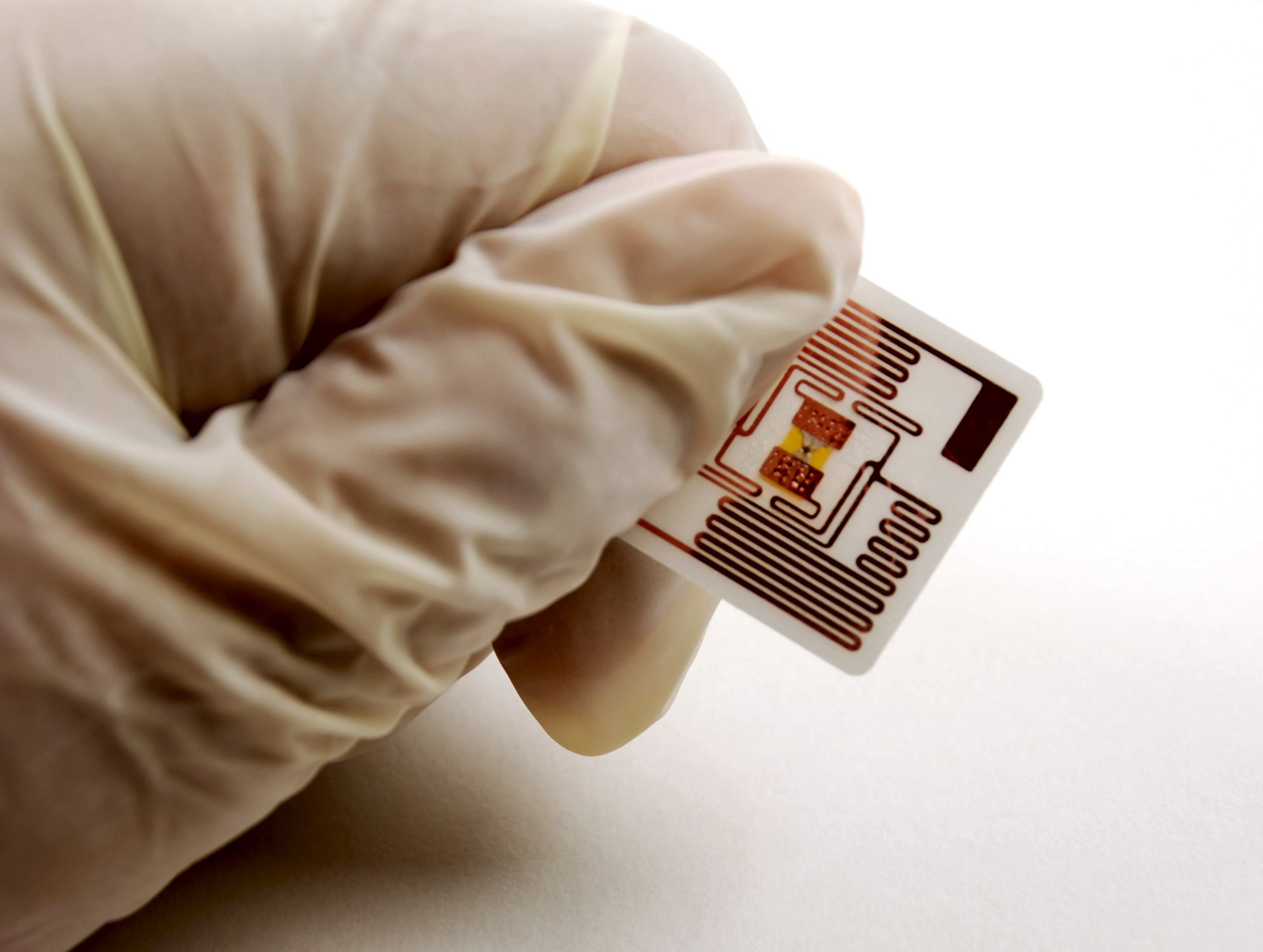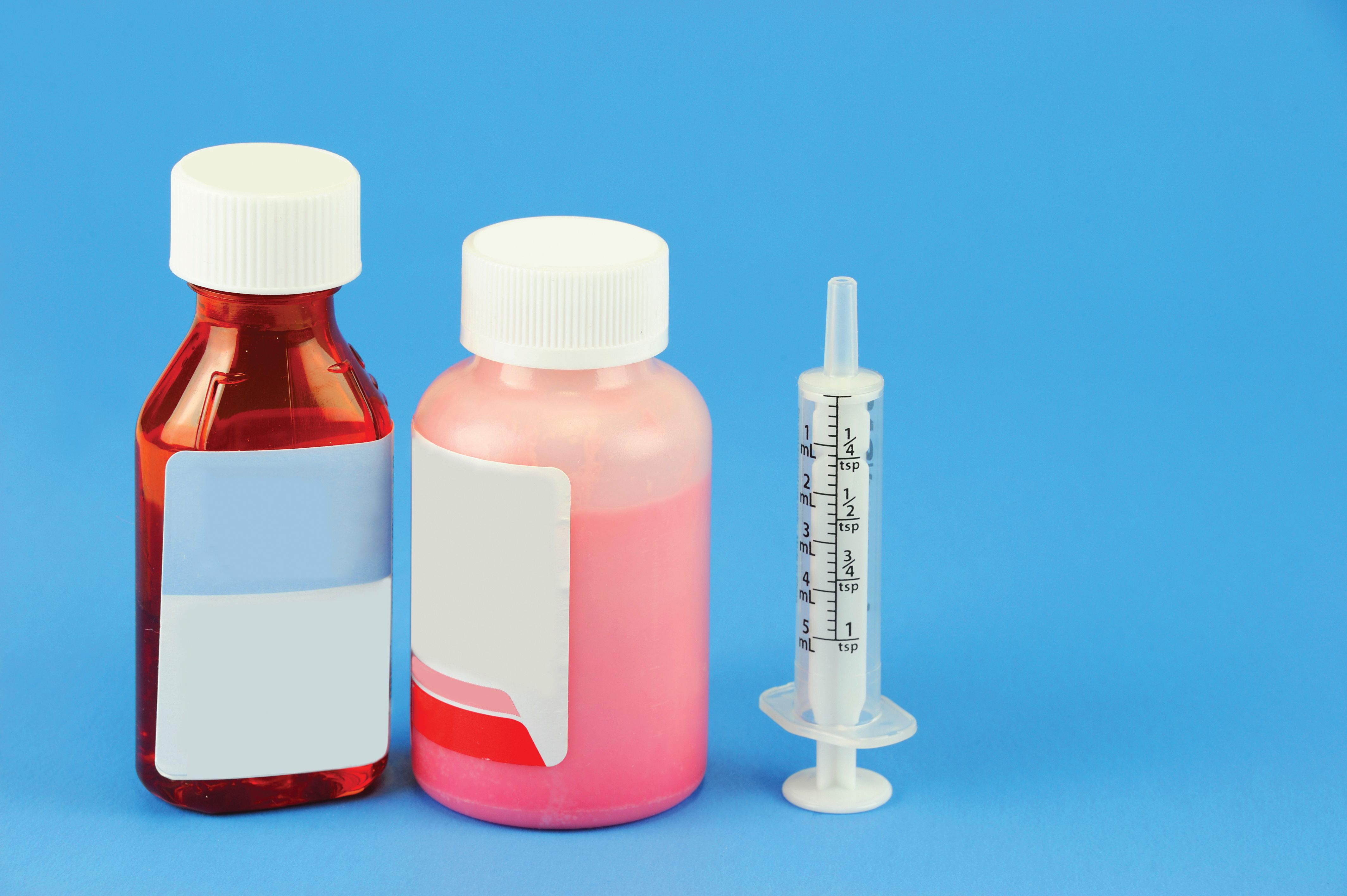News
Article
Pharmaceutical Technology
Controlled Crystallization During Freeze-Drying
The authors discuss the preparation of lipophilic drug nanocrystals by controlled crystallization during freeze-drying.
Modern drug-discovery techniques are rapidly increasing the number of lipophilic drugs (1). This lipophilicity and consequent slow dissolution rate results in poor bioavailability after oral administration. However, these drugs are easily absorbed from the gastrointestinal tract once dissolved (2). Therefore, the bioavailabilities of these drugs can be improved by increasing dissolution rate (3).
The formation of drug nanocrystals is one of many strategies to increase dissolution rate. Drug nanocrystals are crystalline drug particles with a diameter below 1 µm. Because of their small size, the saturation concentration around these particles is increased (Ostwald–Freundlich, see Eq. 1), the boundary layer thickness is decreased (Prandtl, see Eq. 2), and the specific surface area is increased (4). All these effects contribute to an increased dissolution rate (Noyes–Whitney, see Eq. 3) as shown below (5).

where, Cs,curved is the saturation concentration around the curved surface, Cs,flat is the saturation concentration at a flat surface, γs is the interfacial surface tension, Md is the molecular weight of the drug, R is the gas constant, T is the temperature, ρd is the density of the drug, and r is the radius of curvature of the drug.

where, h is the hydrodynamic boundary layer thickness, k is a constant, L is the length of the surface in the direction of the flow, and V is the relative velocity of the flowing liquid versus the flat surface.

where, dm/dt is the dissolution rate of the drug, d is the diffusion constant, A is the specific surface area, and C is the concentration in the bulk.
Current methods to prepare drug nanocrystals can be divided into bottom-up and top-down methods. Top-down methods (e.g., ball milling and high pressure homogenization) have disadvantages, such as the use of surfactants, low process yields, and the difficulty in achieving uniform-size distribution (6, 7). Bottom-up methods are generally precipitation-based but also have disadvantages, such as difficulty in controlling crystal size and the need to use toxic organic solvents.
To overcome these disadvantages, controlled crystallization during freeze-drying (CCDF) was developed as a novel method to prepare drug nanocrystals (8). First, two solutions are prepared: lipophilic drug in tertiary butyl alcohol (TBA), and matrix material in water. The two solutions are mixed and immediately frozen. The temperature in the freeze-dryer is then increased to –25 °C and this temperature is kept constant for a few hours. Finally, the frozen mixture is freeze dried at this relatively high temperature.
Because the mixture of drug, matrix material, TBA, and water is thermodynamically unstable, the drug and matrix material can either crystallize upon freezing or after the temperature in the freeze-dryer is increased (9). Therefore, the first aim of the study was to elucidate when the four different components crystallized during the production process by placing a Raman probe in the freeze-dryer above the sample. By using this in-line analytical tool, the crystallization of the individual components was monitored.
The second aim of the study was to modify the freeze-drying process to ensure its suitability for large-scale production. Because the thermodynamically unstable mixture must be frozen immediately after mixing, at laboratory-scale, only small quantities were mixed in glass vials and subsequently frozen on a freeze-dryer shelf or by immersion in liquid nitrogen. At production scale, it is difficult to mix and freeze large quantities sufficiently fast, so a three-way nozzle was evaluated for its ability to solve this technical problem. The three-way nozzle used in this study allows two liquids to flow separately through the nozzle; the two solutions are mixed just outside the nozzle by an atomizing airflow from a third channel and sprayed into liquid nitrogen, thus achieving high freezing rates. To investigate whether this three-way nozzle could modify the small batch freeze-drying process into a semicontinuous spray freeze-drying process, the crystallinity, particle size, and dissolution rate of the obtained products were determined.
Materials and methods
Raw materials. Fenofibrate and TBA were obtained from Sigma-Aldrich Chemie, mannitol (the matrix material) was obtained from Roquette and VWR International.
Preparation of the controlled crystallized dispersions by freeze-drying. To prepare the controlled crystallized dispersions, fenofibrate was dissolved in TBA and mannitol (the matrix material) was dissolved in water (see Table I for compositions). For the small batch freeze-drying process, the aqueous solution and the TBA solution were mixed in a 6:4 ratio.

Table I: Composition of the different solutions used to prepare controlled crystallized dispersions. The mannitolâwater solution and fenofibrateâtertiary butyl alcohol (TBA) solution were mixed in a 6:4 ratio.
The mixture was frozen in vials on a precooled (–50 °C) freeze-dryer shelf (Christ) or by immersion in liquid nitrogen after being placed on the precooled freeze-dryer shelf. The temperature of the samples was equilibrated at –50 °C on the freeze-dryer shelf. The temperature of the freeze-dryer shelf was then increased to –25 °C. This temperature was kept constant for at least three hours, after which time the samples were dried at the same temperature by decreasing pressure and using a condenser temperature of –85 °C.
Preparation of the controlled crystallized dispersions by spray freeze-drying. For the semicontinuous spray freeze-drying process, the aqueous solution and the TBA solution were pumped separately (9 and 6 mL/min, respectively) through the three-way nozzle and sprayed into liquid nitrogen. After the nitrogen was evaporated, the frozen sample was placed on the freeze-dryer shelf and equilibrated at –50 °C. The temperature was gradually increased to –25 °C and kept constant for three hours. After this, the samples were dried at the same temperature by decreasing the pressure and using a condenser temperature of –85 °C.
In-line Raman spectroscopy. A noncontact probe (Kaiser Optical Systems) was placed immediately above the sample in the freeze-dryer and coupled via a glass fiber optic cable to a Raman Rxn1 spectrometer (Kaiser Optical Systems) equipped with an air-cooled charge-coupled device (CCD) detector (back-illuminated deep depletion design). The laser wavelength was the 785-nm line from a 785 Invictus near infrared (NIR) diode laser. All spectra were recorded at a resolution of 4 cm-1 using a laser power of 400 mW. The HoloREACT reaction analysis (Kaiser Optical Systems) and profiling software package, the Matlab Software package (version 6.5, MathWorks), and the Grams/AIPLSplusIQ software package (version 7.02, Thermo Scientific) were used for data collection, transfer, and analysis. Spectra were preprocessed by baseline correction using Pearson's method. Spectra were collected every minute during freeze-drying, and the exposure time was 30 s.
Scanning electron microscopy (SEM). SEM pictures were taken with a JEOL JSM 6301-F microscope (JEOL) using an acceleration voltage of 5 kV. The samples were dispersed on top of double-sided sticky carbon tape on metal disks and coated with a thin layer of gold–palladium in a Balzers 120B sputtering device (Balzers Union).
Tableting. Tablets of 100 mg were prepared on an ESH compaction apparatus (Hydro Mooi) at a compaction rate of 5 kN/s to a maximum compaction load of 5 kN. The tablets were stored for at least one day in a vacuum desiccator over silica gel before further processing.
Dissolution. The dissolution rate of fenofibrate from the tablets was tested in 1 L of 0.5% w/v sodium dodecyl sulfate solution (Fagron) at 37 °C in a USP dissolution apparatus II (Rowa Techniek) with a paddle speed of 100 rpm. The concentration of fenofibrate was determined spectrophotometrically by a UV–Vis spectrophotometer (UV-1601, Shimadzu) at a wavelength of 290 nm.
Results and discussion
In-line Raman spectroscopy. The dissolution rate of the solid dispersion, which had been frozen on a precooled freeze-dryer shelf, was higher than the dissolution rate of the physical mixture (see Figure 1). Because the freeze-dried sample was fully crystalline (as determined by differential scanning calorimetry and X-ray powder diffraction, the difference in dissolution rate was likely caused by differences in drug crystal size. Therefore, the drug crystals in the controlled crystallized dispersion were smaller (probably in the nanosize range), than the drug crystals in the physical mixture (x50 = 13 µm, determined by laser diffraction).

Figure 1: Dissolution profiles of tablets composed of a physical mixture (open symbols) and controlled crystallized dispersions (black symbols) of 35% w/w fenofibrate in mannitol. (n = 3â6; mean ± standard deviation). (FIGURE 1 IS COURTESY OF THE AUTHORS)
Although both components in the solid dispersion were fully crystalline, it was not clear at what point during the process the drug and matrix material crystallized. Therefore, in-line Raman spectroscopy was used to measure crystallization during the freeze-drying procedure. The Raman spectra clearly show peaks corresponding to water (208–226 cm-1 ), TBA (725–763 cm-1 ), δ-mannitol (865–895 cm-1 ), and fenofibrate (1580–1610 cm-1 ).
These peaks are clearly separated from each other (see Figure 2), so the crystallization of the individual components could be monitored throughout the process. To determine crystallization, the relative intensities of the individual peaks of fenofibrate, mannitol, and water were determined. An increase in the peak intensity indicates the formation of crystals of the corresponding component. Peak intensity cannot be used to determine crystallization of TBA because liquid TBA already shows a peak with a high intensity. Therefore, the width of this peak was used to determine the onset and end of crystallization (10). A narrowing of the peak indicates the start of the TBA crystallization.

Figure 2: Raman spectra during freeze-drying of the rapidly frozen sample during freezing (15 and 75 min), after the temperature was increased to â25 °C (500 min), and during drying (2963 min). The gray bars indicate the characteristic peaks of water (208â226 cm-1), tertiary butyl alcohol (725â763 cm-1), d-mannitol (865â895 cm-1), and fenofibrate (1580â1610 cm-1).
After 15 min on a precooled freeze-dryer shelf, only the TBA peak can be seen in the Raman spectrum (see Figure 2). This indicates that at this stage of the process, the solvents were still in the liquid state and that the solutes were still dissolved in these solvents. After 75 min, the intensity of the peak corresponding to ice increased, and the width of the TBA peak decreased. However, no significant change in the relative intensities of either fenofibrate or mannitol peaks could be seen, which shows that during the freezing step, the solvents crystallized and that, importantly, the solutes did not. During equilibration at –50 °C the solutes still did not crystallize.

Figure 3: Dissolution profiles of fenofibrate from tablets composed of physical mixtures (open symbols), dispersions prepared by the batch process (black symbols), and dispersions prepared by the semicontinuous process (gray symbols). The tablets contained 30% (circular symbols) and 40% (square symbols) w/w fenofibrate in mannitol. (n=3â6; mean). (FIGURE 3 IS COURTESY OF THE AUTHORS)
However, when the temperature was increased to –25 °C and maintained for 500 min, mannitol and fenofibrate peaks increased. This increase in intensity finished well before the drying step was initiated, indicating that crystalline mannitol and crystalline fenofibrate were formed during the crystallization step and that this crystallization was finished before drying started. To initiate drying, the pressure was decreased at 2963 min. The intensity of the water peak decreased and the width of the TBA peak increased thus indicating that sublimation of the solvents had begun. In summary, upon freezing, only the solvents crystallized, while the solutes did not crystallize until the temperature in the freeze-dryer was increased. Crystallization of the solutes finished before drying started.
From freeze-drying to spray freeze-drying using a three-way nozzle. Because only small quantities can be prepared in vials in the initial experiment, this freeze-drying process is not suitable for large-scale production. Therefore, a three-way nozzle was tested to determine if it could convert the small-batch freeze-drying process into a semicontinuous spray freeze-drying process for scale-up.
Solid dispersions prepared by freeze-drying (freezing in liquid nitrogen) and spray freeze-drying were compared. The dissolution rate of fenofibrate from dispersions prepared by the semicontinuous spray freeze-drying process was faster, especially at a higher drug load, than that of dispersions prepared by the small-batch freeze-drying process (see Figure 3).
Because dispersions obtained from the different processes were all fully crystalline, the differences in dissolution rate should be attributed to differences in drug crystal size. Indeed, the SEM pictures indicate that crystals obtained from the semicontinuous process were smaller than those obtained from the batch process (see Figure 4). However, in-line Raman spectroscopy measurements showed that the solutes did not crystallize upon freezing, but after the temperature of the freeze-dryer shelf was increased.

Figure 4: Scanning-electron microscopy pictures of controlled crystallized dispersions prepared by freeze-drying (top) and spray freeze-drying (bottom). (FIGURE 4 IS REPRINTED FROM H. DE WAARD ET AL.,EUR. JRNL. OF PHARM. SCI. 38, 224â229 (2009), WITH PERMISSION FROM ELSEVIER.)
Therefore, the difference in drug crystal size can be explained by the difference in freezing rate (11). During the batch process, vials containing 2 mL solution were immersed in liquid nitrogen, whereas during the semi-continuous process very small droplets were sprayed into liquid nitrogen. Because the volumes of the individual droplets were smaller than the volume of liquid in the vial, rapid freezing rates could be achieved by spray-freezing into liquid nitrogen (12).
A higher freezing rate leads to the formation of smaller solvent crystals, and therefore smaller interstitial spaces (containing the freeze-concentrated fraction) between the solvent crystals (13). Because the drug and matrix crystallize in the freeze-concentrated fraction, the size of the drug crystals is limited to the size of these interstitial spaces. Thus, when smaller interstitial spaces are formed, the final drug crystal size is smaller (see Figure 5).

Figure 5: A diagram of the controlled crystallization process. The white areas represent the solvent crystals, the grey areas the freeze concentrated fraction, and the black squares the drug nanocrystals. (FIGURE 5 IS COURTESY OF THE AUTHORS)
Conclusion
By using in-line Raman spectroscopy, it was shown that during the freezing step of the CCDF process only the solvents crystallized. The solutes did not crystallize until the temperature in the freeze-dryer was increased. Furthermore, the three-way nozzle can be used to alter the small-batch process into a semicontinuous process that is suitable for large-scale production. Controlled crystallized dispersions prepared by the semicontinuous process results in even smaller nanocrystals due to a higher freezing rate. Therefore, the semicontinuous process is not only suitable for large-scale production, but can also result in a better product.
Hans de Waard* is postdoctoral researcher, Niels Grasmeijer is a doctoral student, Wouter L.J. Hinrichs is senior researcher, and Professor Henderik W. Frijlink is chairman, all at the Department of Pharmaceutical Technology and Biopharmacy, University of Groningen, Antonius Deusinglaan 1, 9713 AV Groningen, The Netherlands, tel. +31 50 363 2397, fax +31 50 363 2500, h.de.waard@rug.nl. Professor Thomas De Beer is a professor in the Laboratory of Pharmaceutical Process Analytical Technology at the Department of Pharmaceutical Analysis, Ghent University.
*To whom all correspondence should be addressed.
Submitted: Feb. 11, 2011. Accepted: Apr. 27, 2011.
References
1. C.A. Lipinski et al., Adv. Drug Deliv. Rev. 46 (1–3), 3–26 (2001).
2. G.L. Amidon et al., Pharm. Res. 12 (3), 413–420 (1995).
3. W. Curatolo, Pharm. Sci. Tech. Today 1 (9), 387–393 (1998).
4. D. Hou et al., Biomaterials 24 (10), 1781–1785 (2003).
5. A.A. Noyes and W.R. Whitney, J. Am. Chem. Soc. 19 (12), 930–934 (1897).
6. C.M. Keck and R.H. Muller, Eur. J. Pharm. Biopharm. 62 (1), 3–16 (2006).
7. B.Y. Shekunov et al., Pharm. Res. 23 (1), 196-204 (2006).
8. H. de Waard, W.L.J. Hinrichs, and H.W. Frijlink, J. Control. Release 128 (2), 179–183 (2008).
9. D.J. van Drooge, W.L.J. Hinrichs, and H.W. Frijlink, J. Pharm. Sci. 93 (3), 713–725 (2004).
10. R.L. McCreery, Raman Spectroscopy for Chemical Analysis, (Wiley-Interscience, New York, 1st ed., 2000).
11. H. de Waard et al., Eur. J. Pharm. Sci. 38 (3), 224–229 (2009).
12. J. Hu et al., Pharm. Res. 19 (9), 1278-1284 (2002).
13. M.J. Pikal, "Freeze drying" in Encyclopedia of Pharmaceutical Technology, J. Swarbrick, ed. (New York, Informa Healthcare USA, 2007).
*This article is based on a presentation given at the 7th World Meeting on Pharmaceutics, Biopharmaceutics and Pharmaceutical Technology (PBP World Meeting) in Malta 2010.
Citation: When referring to this article, please cite it as "H. de Waard, N. Grasmeijer, W.L.J. Hinrichs, T. De Beer, H.W. Frijlink, "Controlled Crystallization During Freeze-Drying," Pharmaceutical Technology 35 (8) 58-62(2011)."
Newsletter
Get the essential updates shaping the future of pharma manufacturing and compliance—subscribe today to Pharmaceutical Technology and never miss a breakthrough.






